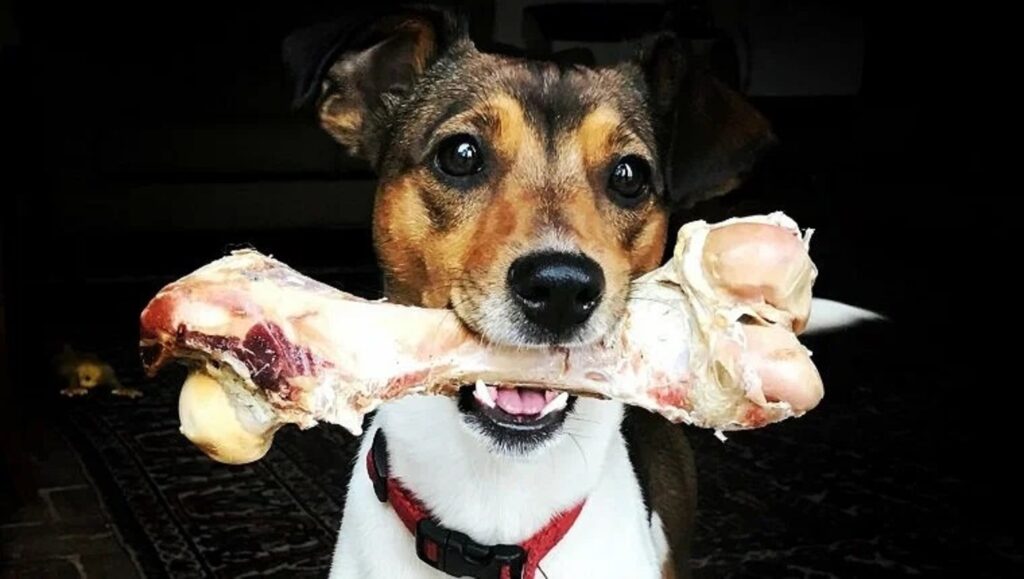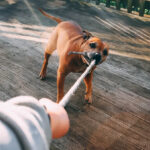As dog owners, we often enjoy sharing treats with our furry companions, but not all human foods are safe for dogs. One common question is whether dogs can have pork bones. While it may seem natural to give a dog a bone, pork bones, in particular, can pose significant risks. This article explores the potential dangers, alternatives, and best practices to ensure your dog’s safety and health.
The Risks of Feeding Dogs Pork Bones
Pork bones may seem like a harmless treat, but they come with several dangers that can harm your pet. Here are some reasons why pork bones are not recommended for dogs:
- Splintering and Choking Hazards
Cooked pork bones, in particular, are brittle and prone to splintering. When chewed, they can break into sharp fragments that may cause:
- Choking
- Damage to the mouth, throat, or gums
- Perforations in the stomach or intestines, leading to life-threatening conditions.
- Digestive Issues
Even raw pork bones can cause digestive problems. Swallowed bone fragments may block or irritate the digestive tract, leading to vomiting, diarrhea, or constipation. - Bacterial Contamination
Raw pork bones may carry harmful bacteria like Salmonella or E. coli, which can infect both your dog and you if proper hygiene isn’t maintained. - High Fat Content in Pork
Pork bones often retain fatty tissue, which can upset a dog’s stomach or lead to pancreatitis—a serious inflammation of the pancreas. - Bone Size and Type
The size of pork bones also matters. Small bones can be swallowed whole, posing an immediate choking hazard, while larger bones can still cause other complications.
What to Do If Your Dog Eats a Pork Bone
Accidents happen, and your dog may manage to grab a pork bone despite your precautions. Here’s what to do:
- Monitor for Symptoms
Watch your dog for signs of distress, including:
- Gagging or choking
- Vomiting or diarrhea
- Lethargy
- Abdominal pain or swelling
- Difficulty defecating
- Contact Your Veterinarian
If you notice any unusual symptoms, contact your veterinarian immediately. They may recommend a physical exam, X-rays, or other treatments to ensure your dog’s safety. - Do Not Induce Vomiting
Never induce vomiting unless directed by a veterinarian. Bone fragments can cause more harm on their way back up.
Safer Alternatives to Pork Bones
Instead of pork bones, consider these safer options for satisfying your dog’s chewing instincts:
- Commercial Chew Toys
Durable chew toys made of rubber or nylon are designed to be safe and long-lasting for dogs of all sizes. - Raw Bones from Approved Sources
Large, raw bones from beef or bison may be safer options, as they are less likely to splinter. However, these should be given under supervision and removed once they become small enough to swallow. - Dental Chews
Dental chews are a great way to promote oral health while satisfying your dog’s desire to chew. - Natural Treats
Some natural chews, like bully sticks or antlers, can provide a safer alternative to bones. Always choose appropriately sized treats for your dog.
How to Keep Your Dog Safe Around Bones
If you choose to give your dog any type of bone, follow these safety tips:
- Avoid Cooked Bones: Cooked bones are more likely to splinter and cause harm.
- Supervise Chewing: Never leave your dog unattended with a bone or chew toy.
- Choose Appropriate Sizes: Select a bone or chew that is larger than your dog’s mouth to prevent choking.
- Dispose of Chewed Bones: Remove bones that have been chewed down to small pieces.
- Consult Your Vet: Before introducing bones or chews, talk to your veterinarian about the best options for your dog’s size, breed, and health.
Conclusion
While dogs may instinctively enjoy chewing on bones, pork bones are not a safe option due to their tendency to splinter and the associated risks of choking, digestive issues, and bacterial contamination. As responsible pet owners, it’s important to prioritize your dog’s health and choose safer alternatives. When in doubt, consult your veterinarian to determine the best treats and chew options for your furry friend.
By making informed decisions, you can ensure your dog stays happy, healthy, and safe.



